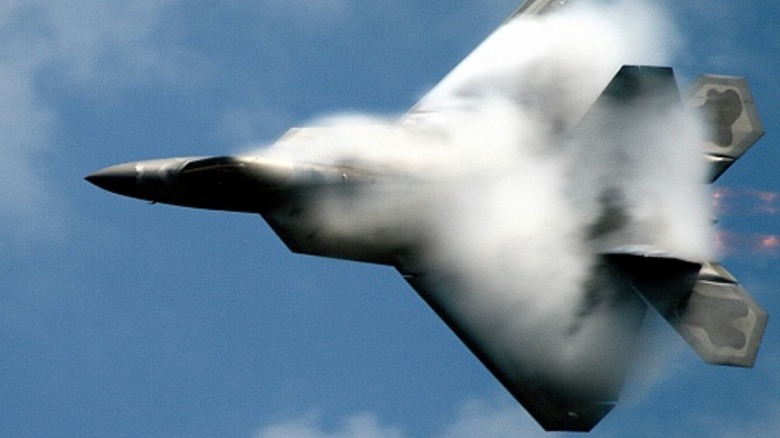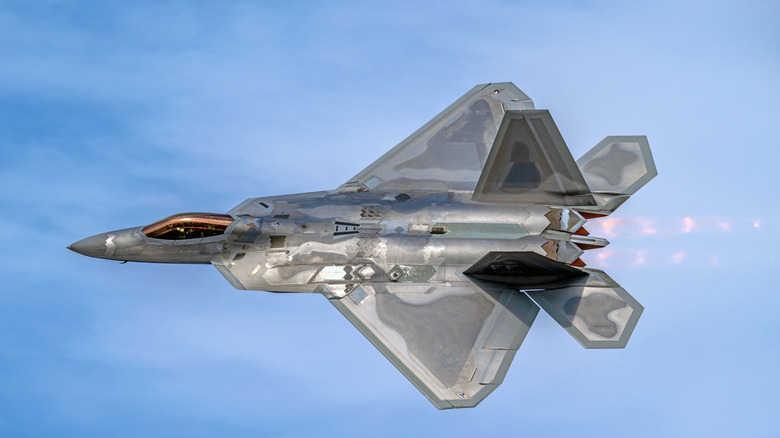F22 Raptor Top Speed: How Fast Is The Fighter Jet?
The F-22 Raptor was the world's first operational fifth-generation fighter jet, and remains one of the most advanced planes in the air. Lockheed Martin receives a lot of credit for making the plane what it is, but the aerospace firm isn't the only company responsible for the F-22's biggest strengths and weaknesses. Both Boeing and Pratt & Whitney had a hand in garnering the F-22 the attention it has received since it entered service for the U.S. Air Force in 2005. Lockheed Martin and Boeing designed the jet's body, and Pratt & Whitney manufactured its twin F119-PW-100 turbofan engines with afterburners and two-dimensional thrust-vectoring nozzles that can each produce 35,000 pounds of thrust.
It's not the fastest fighter jet in the Air Force's arsenal — that title goes to the F-15E Strike Eagle – but it's up there. Just how fast it goes depends on its altitude, because a lower altitude comes with a higher level of drag while a higher one means less drag. At sea level, it can get up to 921 mph or Mach 1.21. At higher altitudes, however, it exceeds Mach 2 or 1,534 mph.
The Air Force manual for the F-22 says that the Raptor's top speed is Mach 2, but James E. "JB" Brown pushed it to Mach 2.1 once just to prove it was possible, according to The War Zone. Brown is a former Air Force chief test pilot as well as president and CEO of the National Test Pilot School.
The F-22 Raptor can cruise at supersonic speeds
Pushing the F-22 or any fighter jet to its maximum speed might conserve time, but it requires the use of the fighter jet's afterburner, which expends more fuel and needs to be used strategically. To break it down, fighter jet afterburners inject fuel directly into the airflow, so when the fuel erupts, it forces the oxygen to expand, resulting in a force of energy that propels the jet forward more quickly. Pilots are able to sustain supersonic speeds for a short time without using their afterburners, but if they want to remain faster than the speed of sound, they usually have to periodically engage it.
However, engineers worldwide have been able to design some jets that can supercruise. Supercruise is a plane's ability to sustain supersonic speeds without engaging the afterburner and the F-22 is one of those planes. Being able to cruise through the air faster than Mach 1 without engaging the afterburner means the plane can get to its destination faster without using up more fuel.
While any jet sustaining Mach 1 without its afterburner meets the definition of supercruise, the Raptor exceeds Mach 1.5 while supercruising. In fact, it can reach Mach 1.6 or 1.7 without breaking a sweat. Moreover, the ability to supercruise means the Raptor can maintain its stealth capabilities, since the afterburner generates a heat signature than can be detected by an adversary's radar system.

